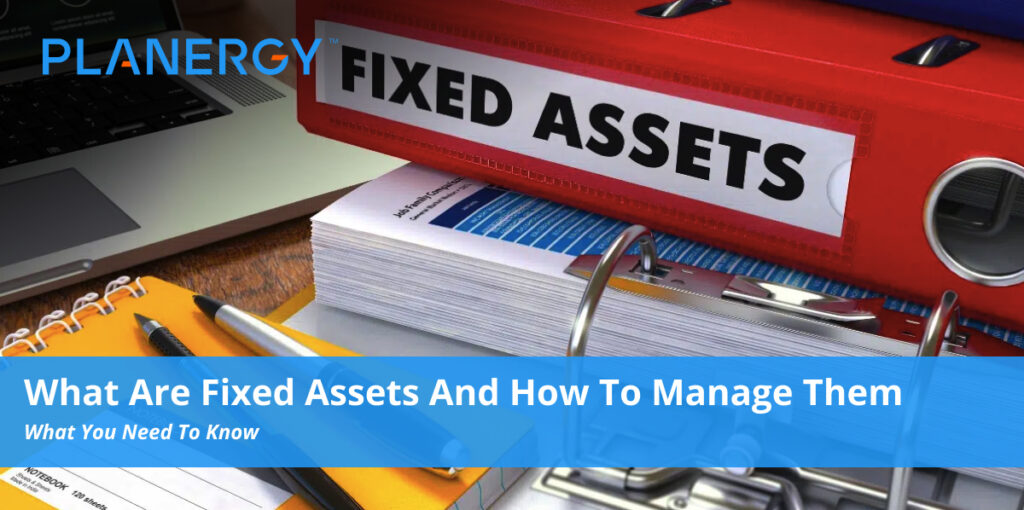In accounting, fixed assets refer to any valuable physical items a business owns. They last 12 months or more and are designed to help the business carry out operations.
Examples of fixed assets may include real estate (land doesn’t depreciate, more on that later), buildings, construction work-in-progress, office equipment (desks, filing cabinets, etc.), vehicles, and tools.
Fixed assets are those that help a company make money, get business loans, and make sure the bills are paid in times of financial uncertainty.
You may also hear fixed assets referred to as capital assets or plant assets. Some fixed assets are also tangible assets, in that they are physical items.
Fixed assets are important to a company for three reasons:
- They are used to make money. For example, use your laptop to do social media marketing which helps you generate more business.
- They can be sold. If your largest client disappears and creates issues with your cash flow, you could easily sell your computer server to help keep your business afloat.
- It can help you secure a business loan. Your fix at sets may serve as collateral which is a guarantee that you will repay your loan. If you don’t pay the lender, they can take your fixed assets. That’s why it’s important to be sure you can survive without the assets, or you can quickly secure different ones.
Net Fixed Assets
Net fixed assets are your total fixed assets minus any depreciation on those assets and any liabilities. In simpler terms, it translates that you need to account for any decrease in the value of your fixed assets.
It also means you need to account for any liabilities like loans you owe on your fixed assets.
The net fixed assets are used by business owners to determine how much of their total fixed assets are really worth or how much liability they have.
For instance, if a web designer has $5,000 worth of fixed assets but after accounting for depreciation and loans owed on the fixed assets, she has a liability of -$250.
Gross fixed assets, on the other hand, are the total value of any fixed assets that a company has before loans and depreciation are accounted for.
Fixed Assets vs. Current Assets
Current assets and fixed assets both appear on the balance sheet. Current assets are meant to be converted to cash or used in the short-term, over a period of less than one year.
Fixed assets on the other hand are meant to be used over the long term. Current assets include cash and cash equivalents, prepaid expenses, accounts receivable, and inventory.
Fixed assets are depreciated and current assets are not.
Fixed Assets vs. Noncurrent Assets
Fixed assets are non-current assets. Other noncurrent assets include intangibles and long-term Investments.
Intangible assets are fixed assets that are to be used over the long term but they don’t have a physical form. Intangible assets include trademarks, copyrights, goodwill, and intellectual property.
Long-term Investments can include bond investments that won’t be sold or mature within the next 12 months.
Fixed assets have benefits for the company. They are especially important for capital-intensive industries. If a business is consistently reporting negative net cash flows for purchasing fixed assets, it’s a strong indication that the firm is in an investment or growth stage.
Depreciation
Depreciation is the term used to describe when an asset to creases in value. Every asset undergoes depreciation. It’s usually the result of normal wear and tear.
The majority of fixed assets will decrease in value simply because they get old and don’t work as efficiently or stopped working altogether.
The IRS decides the rate of depreciation for different types of assets. The depreciation then becomes a write-off on an organization’s taxes. There is no tax on depreciation.
For more information on the forms you need to report depreciation properly, the IRS has an article to help you.
The only fixed asset that will not depreciate is land because it does not have a limited useful life.
A fixed asset expense is not recorded during the purchase but should be depreciated over the useful life of the asset that keeps the purchase consistent with the matching principle.
According to the matching principle, the expenses should be recorded when they can be matched with generated revenue.
There are three different depreciation methods you can use to calculate depreciation.
Straight Line Method
Is the easiest way to calculate depreciation. The same depreciation expense is reported every year.
For instance, if you purchase a piece of equipment for $20,000 and it has a useful life of four years, your depreciation expense is $5,000 every year not including your salvage cost.
Double Declining Balance Method
This method is best used for vehicles, equipment, and other items that tend to depreciate quickly within the first few years of ownership. It depreciates the item at double the rate of the straight line method.
It is considered an accelerated depreciation method. You’ll take a higher amount the first two years, and then the depreciation expense declines in subsequent years.
Units of Production Method
This method is best for equipment that has a useful life based on production rather than years of use. It’s possible to depreciate based on the number of hours the equipment has been used or the output – depending on the machine and what it is used for.
If the machine has a long lifecycle but is heavily used, then it makes sense to handle the valuation with the units of production method. The heavy use will naturally shorten the machine’s lifecycle.
According to IRS rules, non-residential buildings can be depreciated over 39 years with the Modified Accelerated Cost Recovery System (MARCS) method of depreciation.
Fixed Asset Accounting
When a company either acquires or disposes of a fixed asset, it is recorded on the cash flow statement under the cash flow from investing activities. All of this is handled on the company’s balance sheet, which is used in financial reporting.
Purchasing fixed assets represent a cash outflow to the company while the sale is a cash inflow.
If the asset’s value goes below its net book value, the asset is subject to an impairment rate down. This simply means that its recorded value on the balance sheet is adjusted downward to reflect that it is overvalued in comparison to the current market value.
Once a fixed asset has reached the end of its useful life, it is usually disposed of by selling it for a salvage value.
The salvage value is the estimated value of an asset if it was broken down and sold for parts. In certain situations, the asset may become obsolete and be disposed of without receiving any kind of payment.
In either situation, the fixed asset is written off on the balance sheet because it is no longer used by the company.
According to Generally Accepted Accounting Principles or GAAP, fixed assets are listed on the balance sheet as part of the property, plant, and equipment or PP&E. The purchase price is noted, but cannot be written off entirely at the time of purchase.
Managing Fixed Assets
Managing your fixed assets can be extremely unpredictable. It helps if you have a fixed asset management solution to help track them.
Here are some of the ways you can track and manage your company’s fixed assets.
Software
It’s a good idea to keep a record of all your assets on your computer, so you can edit and update the list as needed. Using a spreadsheet also makes it easier to keep track of the book value and depreciation.
If you have a high volume of assets, you may need to opt for specialized asset management software. This makes it easier for small businesses to keep track of all of their long term assets and account for accumulated depreciation.
Keeping a Physical Inventory
Simply having asset tracking software does not guarantee that your employees will use it correctly. People will make mistakes. They may forget to update the inventory or take something home with them to keep.
It’s a good idea to take a physical inventory at least once a year – if not every six months – to determine whether your organization has all the necessary furniture, equipment, and other items.
Many asset tracking software companies will give you barcode stickers that you can use on all of your fixed assets. Then, all it takes is using the barcode scanner to confirm that everything listed in the system is still where it should be.
Using GPS Tracking
If a lot of your assets move around – such as laptops that are issued to employees that go everywhere they go – or a fleet of company vehicles, then barcodes don’t necessarily do you any good. In that situation, using GPS tracking makes the most sense.
If you have equipment that spends a significant amount of time in storage between assignments, you can use GPS trackers to report the location once a week when items are in storage, and every five minutes after it goes into motion. It’s also possible to use GPS to create a geofence.
You’ll get an alert if your equipment or vehicle ever crosses the boundary of the geofence.
Depending on the number of assets you have in the size of your company, it may not be worth putting the same level of effort into tracking each of your assets.
You have to monitor the condition of your asset and any depreciation of buildings you own, but you don’t have to barcode them in order to know they’re still there.
In some situations, it makes sense to only track fixed assets that are worth more than a certain dollar amount, like $5,000, or any mission-critical assets over $500 that could easily go missing without anyone being able to spot the theft.




